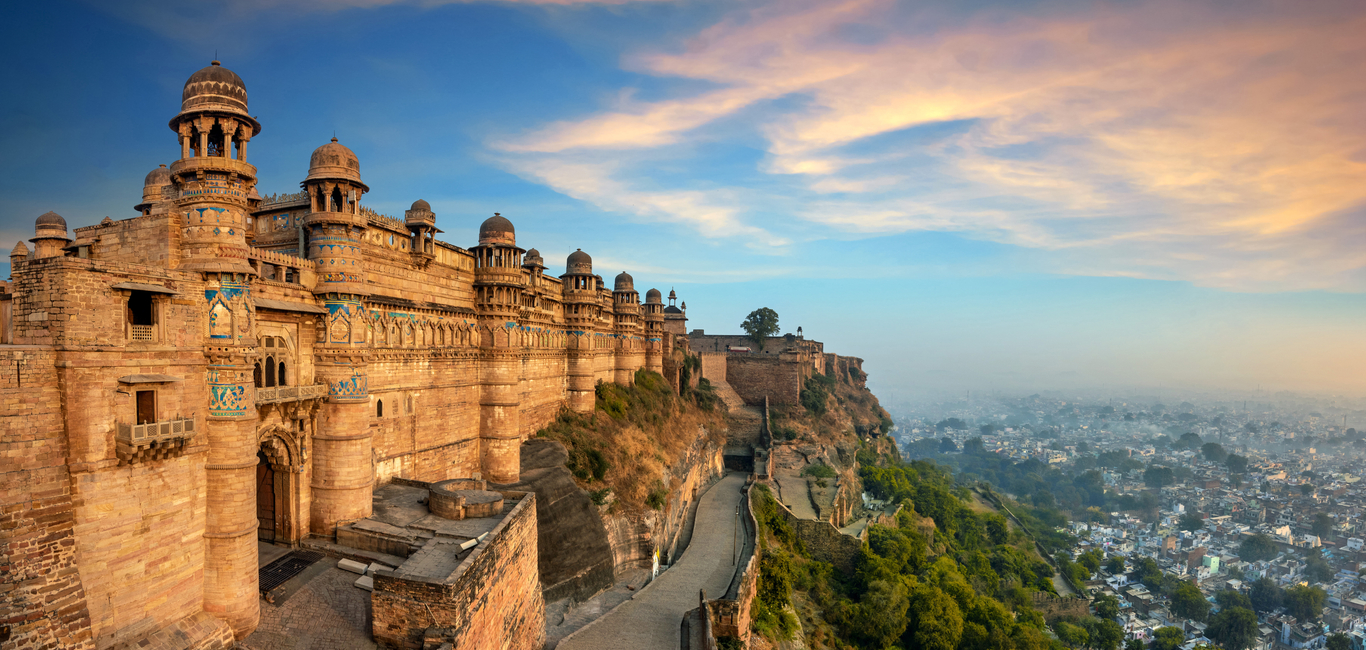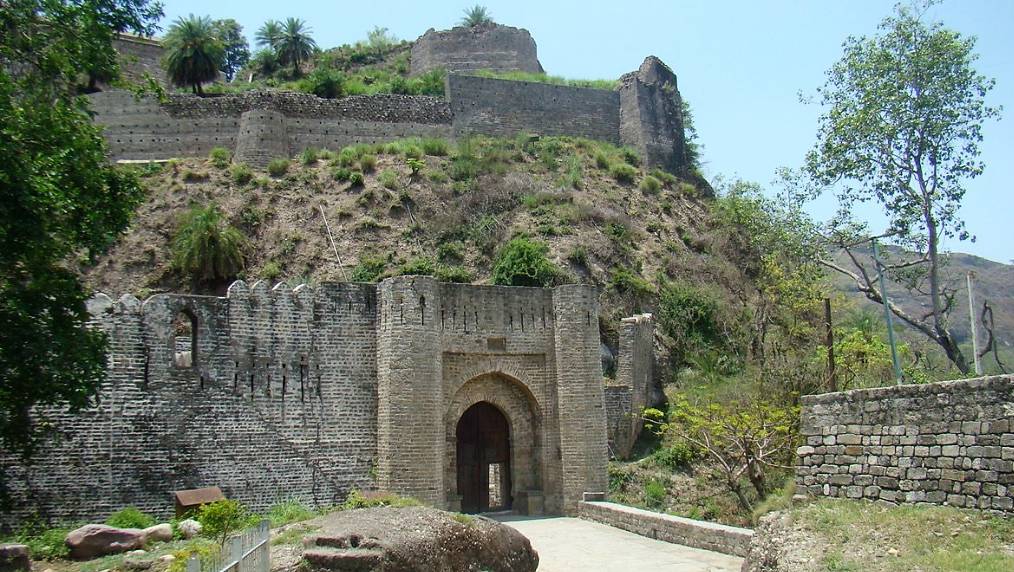1. Pangong Tso Lake : Ladakh Tourism
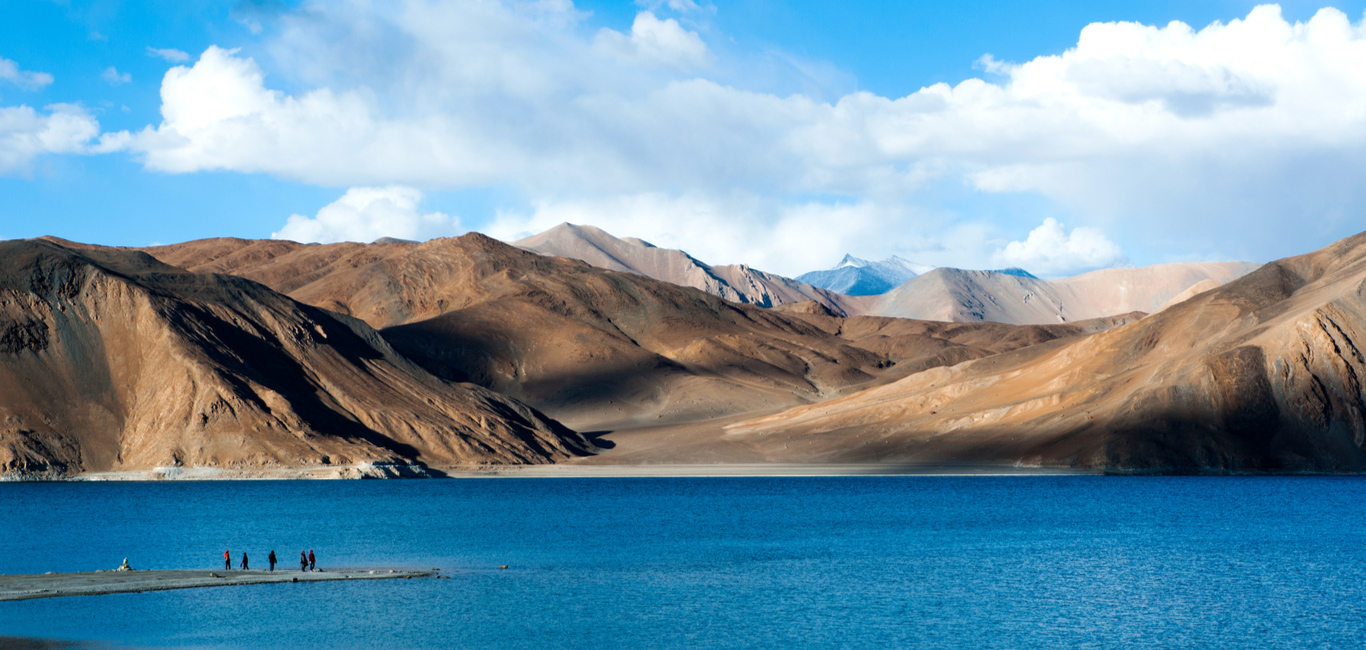
The most popular tourist attraction in Ladakh, Pangong Lake, is an endorheic (landlocked) lake situated 4350 meters. Also known as Pangong Tso, it is 12 kilometers long and extends from India to Tibet. Almost 60% of Pangong Lake lies in the Tibetan Autonomous Region. A unique feature is that it does not remain blue throughout the year or even the day. Instead, it changes colors from azure to light blue to green and grey too! It is as famous amongst tourists as Ladakh lake, where the Bollywood movie “3 Idiots” was shot.
Since the enthralling Pangong Lake falls on the Sino-Indian Actual Line of Control, an inner line permit is required to visit it. The Indian Nationals can quickly obtain individual permits while other foreign nationals need to get a group permit, with at least three persons in the group, accompanied by an accredited guide. The permit can be obtained at the tourist office in Leh for a small fee. Owing to its altitude, the Pangong Lake temperature ranges from -5°C to 10°C. As a result, it freezes entirely during winters despite its salinity. Read More.
2. Khardung La Pass : Leh Ladakh Tourism
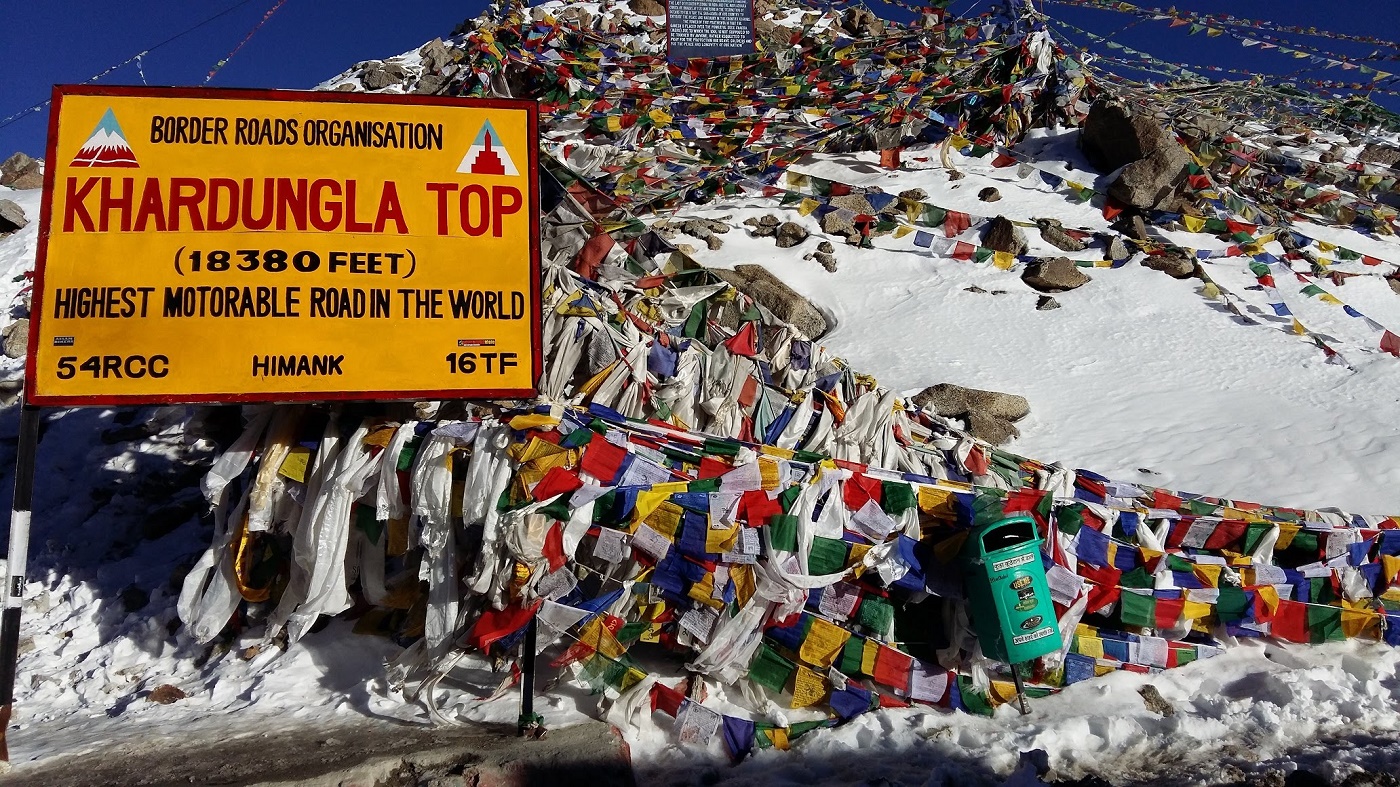
Khardung La, also known as Khardzong La, is a high mountain pass in the Ladakh region of Jammu and Kashmir, near Leh. It serves as the gateway to Shyok and Nubra Valleys. Khardung La is famous as the highest motorable road in India at an elevation of 5602 meters. However, contrary to the belief, its actual elevation is 5359 meters making Dungri La the highest motorable road pass in India.
The pass is a perfect getaway for adventure enthusiasts, peace seekers, and mountain biking aficionados. The tourists require an Inner Line Permit to enter the pass and travel through it. Due to heavy rains and snowfall, the Khardung La pass remains closed from October to May.
Khardung La was built in 1976 and was opened for the public in 1988. The pass is crucial for India as it is used to carry supplies to the Siachen glacier. From the top, you can get picturesque views of the Karakoram range and the Himalayas. Read More.
3. Magnetic Hill In Leh : A Zero Gravity Place Of India
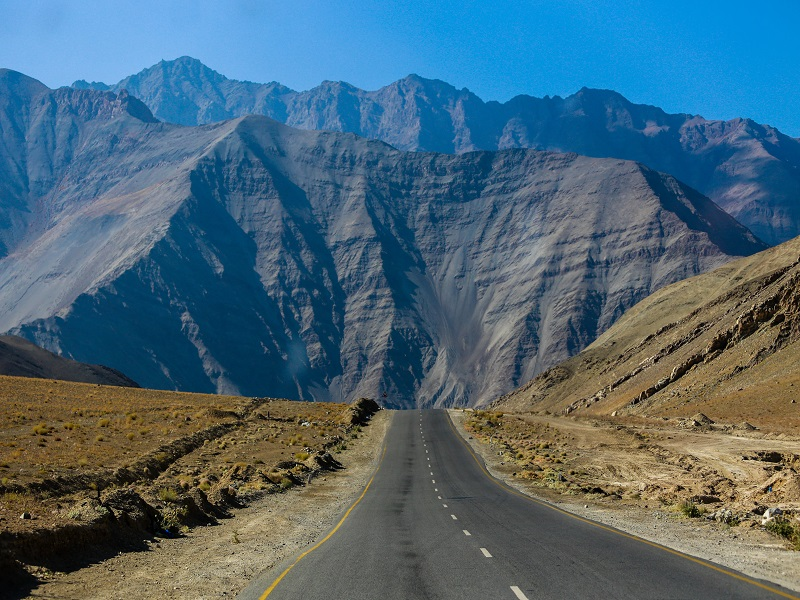
The famous Magnetic Hill of Ladakh is a cyclops hill where vehicles defy the force of gravity and move upwards on the hill when parked at the marked location. To experience this phenomenon, park the car in neutral gear in the yellow box marked a few meters ahead of the Magnetic Hill road. From this point, the car starts moving at a speed of 20 km ph.
Even though there are some myths regarding the mysterious magnetic hill, the fact is that the layout of the area and the surrounding hills give it an optical illusion. The downhill road appears to be an uphill road that leads to the car slowly gaining momentum, which seems to be going uphill against gravity when it is rolling downhill. Read More.
4. Zanskar Valley, Leh : How To Reach, Best Time & Tips
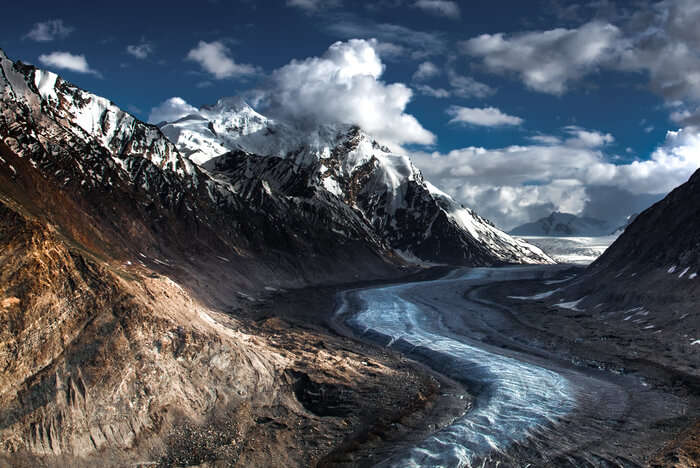
Located in the Kargil district to the east of Ladakh (around 105 km) lies the bewitching Zanskar Valley. Pronounced as Zahar or Zangskar locally, it is separated from Ladakh by the Zanskar mountain range, part of The Tethys Himalayas. Zanskar is known for raw landscape and is mostly traveled for trekking and river rafting.
The easiest way of reaching Zanskar is from Kargil through Suru Valley. The semi-desert region is flanked by snow-capped mountains and sparkling clean rivers along with distinct flora and fauna. It is cut off from the rest of the world for over nine months because of heavy snowfall in the region. The only way to reach Zanskar from December to February is to undertake the challenging Chadar Trek. Read More.
5. “Orchard of Ladakh” Nubra Valley Tourism
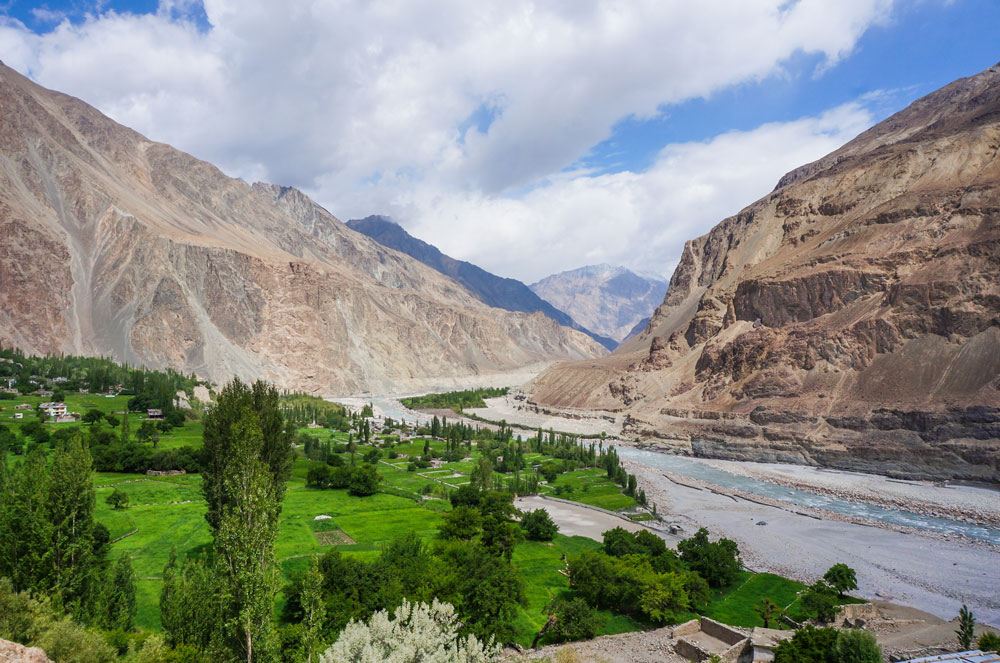
Nubra Valley lies in the union territory of Jammu & Kashmir, at a distance of around 140 Km from Leh. Located on the ancient Silk Route, the valley has Shyok and Nubra rivers snaking through it and some beautiful monasteries.
Most tourists travel to Nubra Valley from Leh through Khardung La. The region is currently under military supervision because the road further leads to the Siachen base camp, which happens to be the highest battlefield in the world. All foreign nationals need to get a protected area permit, and Indian travelers must obtain an Inner Line Permit to enter the Nubra valley. It would be best if you handed over the photocopies of your travel permits to the soldiers in the pass.
With arid mountains in the backdrop, Nubra Velly is famous for the Bactrian camel rides. Bactrian camels are of the rarest sort, having two humps, and were the primary source of transportation in the silk route. It is also famous for its Hippophae shrub, popularly known as Leh Berry.
In Diksit, you can buy some lovely Kashmiri or Tibetan artifacts, Pashmina shawls, woolen socks, almonds, apricots, apples, and other things that define Kashmir. Read More.
6. Shanti Stupa, Leh Ladakh
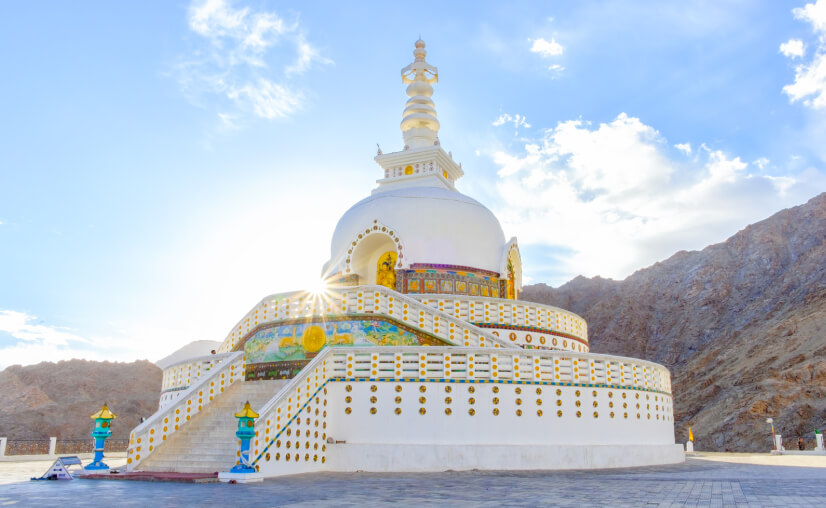
The Shanti Stupa in Leh is a magnificent white-domed Buddhist monument located atop a steep hilltop at a dizzying height of 11,841 feet. It is a religious place for Buddhists as it holds the relics of Buddha, consecrated by the 14th Dalai Lama. It is also popular amongst tourists as it offers a sweeping view of Leh and the nearby Changspa village. Shanti Stupa looks exceptionally beautiful during the whole moon night when the moonlight naturally illuminates it.
Shanti Stupa was constructed in 1991 by Japanese Buddhist Bhikshu Gyomyo Nakamura. The construction was jointly done by the Japanese and Ladakhi Buddhists to mark the completion of 2500 years of Buddhism and promote world peace. It is a part of the peace pagoda mission, which aims to spread peace through the preaching of Buddha. Shanti Stupa is a perfect getaway for both- those looking to obtain peace from offering prayers to God and those waiting to be mesmerized by nature’s wondrous beauty. Read More.
7. Tso Moriri Lake, Leh Ladakh
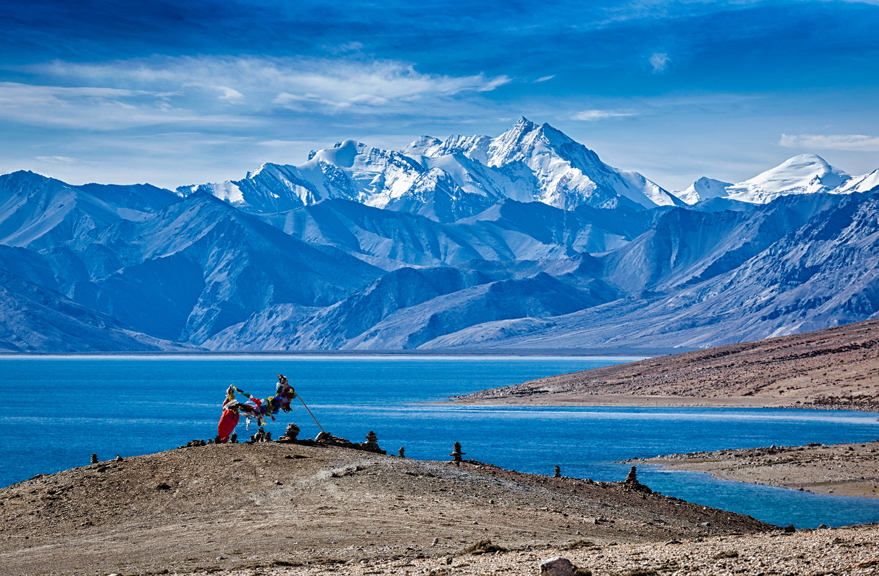
Tso Moriri Lake is the largest high altitude lake in India, situated at 4,595m. Located between Ladakh and Tibet in the Changtang region, it is a twin to the Pangong Lake. This lake offers a scenic place of peace and tranquillity flanked by mountains, measuring about 28 km in length from north to south and 8 km wide. An inner line permit is required for visiting Tso Moriri.
The stunning Tso Moriri can be visited only during the summer months, starting from April when the lake starts to melt. May, June, July, and August are the peak tourist season. Tso Moriri remains inaccessible and entirely frozen from January to March.
Tso Moriri is a declared Ramsar site which means one cannot set up a tent or construct anything near the lake. It is also called the ‘mountain lake,’ owing to the peaks surrounding it, towering at the height of 2000 meters, shutting it off from the outside world. Several birds can be spotted at Tso Moriri, like the bare-headed goose, the great-crested grebe, the Brahmin duck, and the brown-headed gull. Himalayan hares are abundantly found here too. Read More.
8. Thiksey Monastery, Leh Ladakh
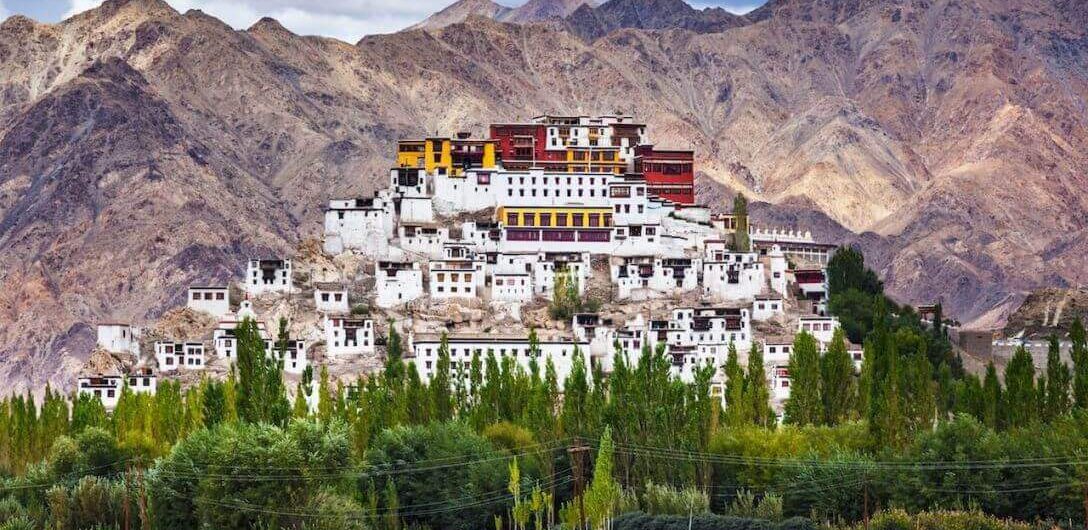
Thiksey Monastery is a Tibetan-style monastery located 20km south of Leh, on Leh Manali highway. The twelve-story monastery is located on top of a hill, giving magnificent views of the town and the Indus valley below. The main highlight of Thiksey is the Maitreya Temple which houses a 15-meter high Maitreya Buddha statue. It covers two stories of the building and is the giant statue in Ladakh.
Thiksey consists of numerous white buildings arranged in hierarchical order, which stand out against the rocky golden brown hills. It resembles the Potala Palace in Lhasa, Tibet. Thiksey consists of 10 temples and is currently home to over 100 monks. The monastery houses Buddhist stupas, thangkas, swords, wall paintings, and statues. Other main attractions at Thiksey are Tara Temple, Lamokhang Temple, Assemnly Hall, Nunnery, Library, and the rooftop. The monastery also serves as a residential monastery for monks. Read More.
9. Hall of Fame Museum, Leh Ladakh
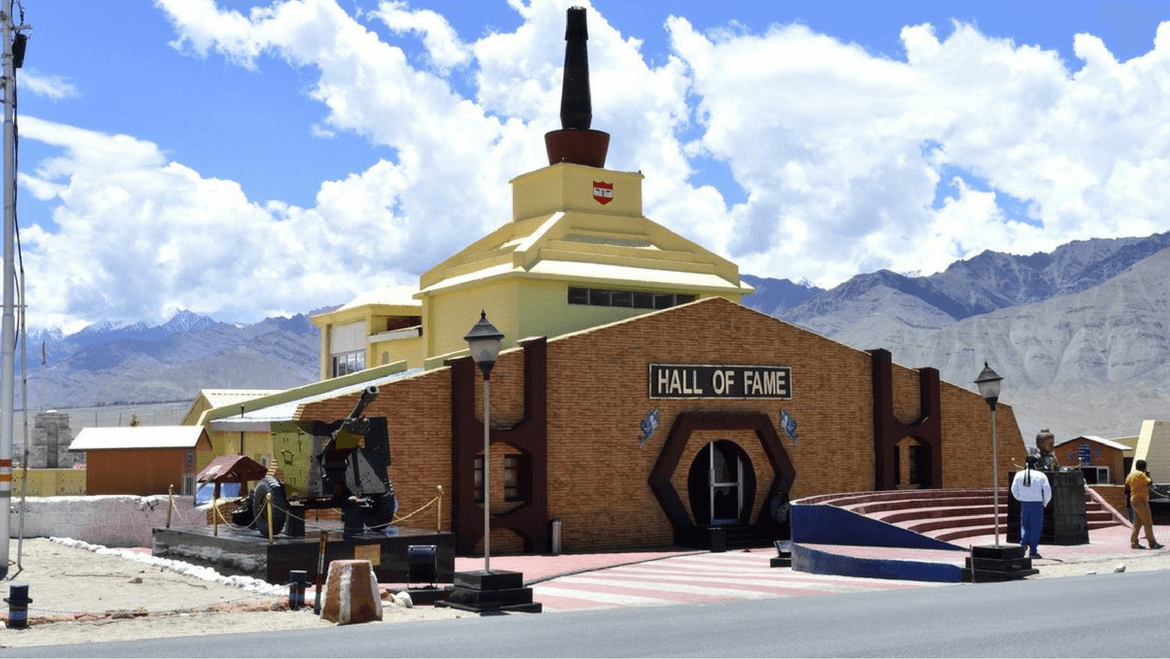
Located at approximately 4 km from Leh on the Leh-Kargil Road, the Hall of Fame is a museum was built in memory of the brave soldiers who lost their lives fighting for India at the Indo-Pakistan war.
Maintained by the Indian Army, the Hall of Fame showcases seized arms and amenities of the Pakistani Army, pictures, and biographies of brave soldiers. A section of the museum also displays the Siachen area, exhibiting apparel and amenities used by the Indian Army in the region. Apart from this, one can also witness items related to Ladakhi culture, history, vegetation, and wildlife found across the globe.
10. Sangam, Leh Ladakh
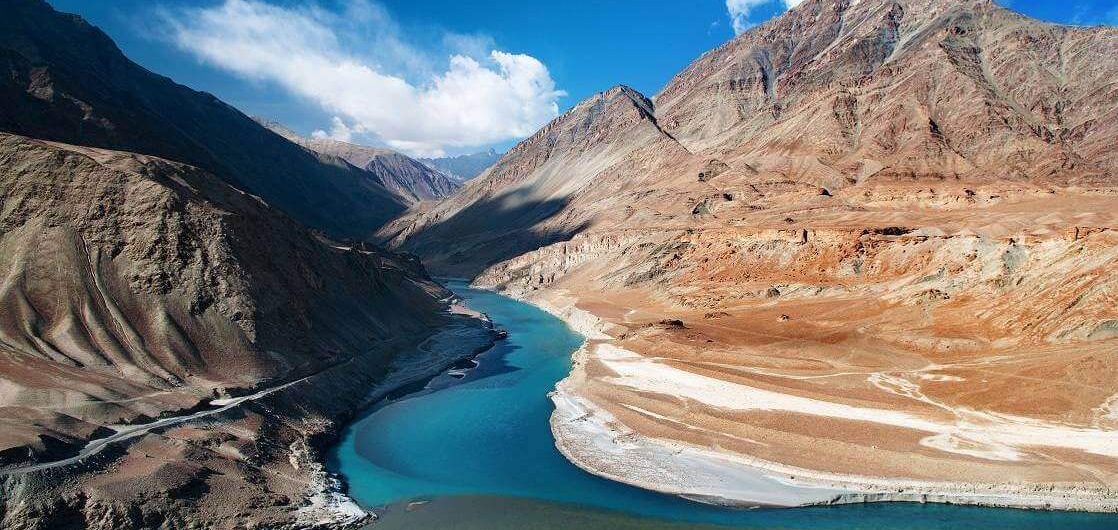
Sangam is the confluence of Indus and Zanskar Rivers in Ladakh. It is located 35km from Leh in Nimmu, on the Leh Srinagar highway. The two rivers can be separately seen meeting at this point. While the Indus River appears shiny blue, the Zanskar River appears muddy green. It is a spectacular sight to witness.
Zanskar River is formed in the Zanskar Valley region. The flow of the two rivers at Sangam changes according to the season. While the Zanskar River is swollen and rapid in summers, the Indus River is calmer. In winters, Zanskar slows down and almost freezes while the flow of Indus is even lesser. The Indus is one of the longest rivers in Asia and originates in Tibet.
Tips :
- A road bifurcates on the Leh Srinagar Highway, where the Sangam is located. It is visible from the main highway.
- There are no local buses that specifically go to the Sangam point. You can board a bus traveling to Srinagar and get down at Sangam.
- Because of the high altitude, acute mountain sickness is shared here.

